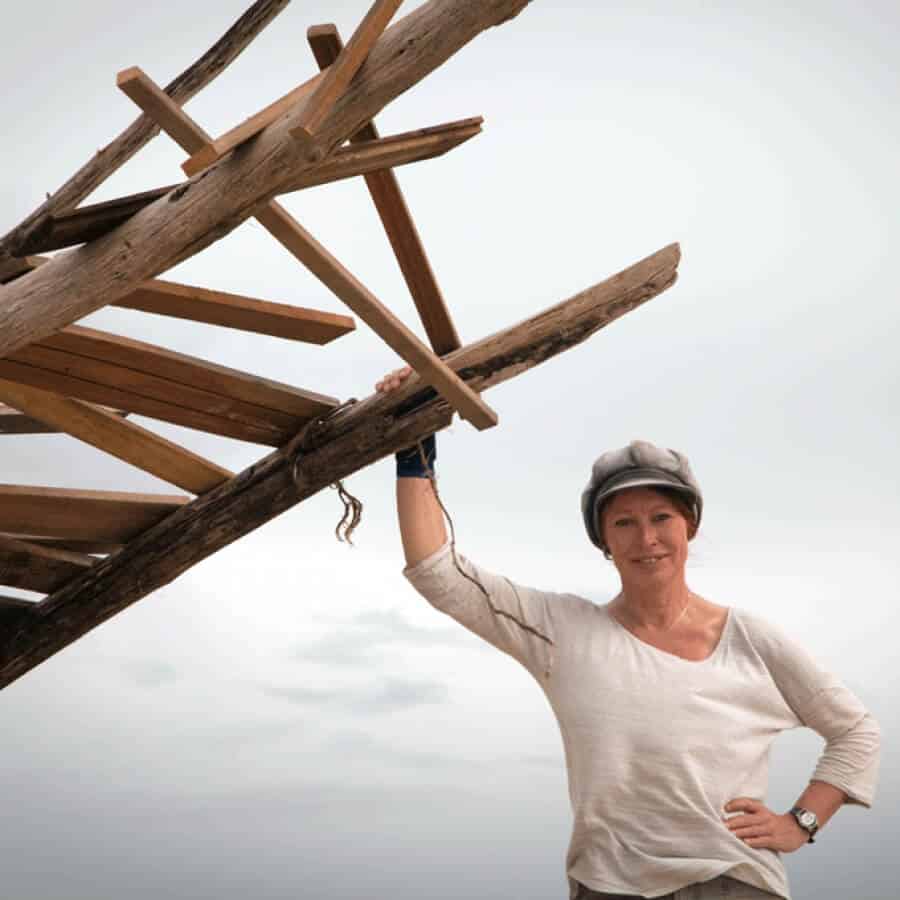German artist Cornelia Konrads has exhibited her work in many countries apart from Germany. Her works are unexampled, specific to the locales she chooses, and possessed of a unique vibe which gives viewers the impression that they are suspended in the air. We are fortunate to have obtained an interview with her given her extremely busy schedule.
Tell us, at what age did it all begin?
Quite early. I’ve always been a real outdoor kid who loved to be surrounded by nature. I had a deep passion for plants and animals and natural shapes and structures and loved to create landscapes with all kinds of formable materials: snow, sand, mud, mashed potatoes… Furthermore, I loved to construct things (or take them apart). These imperatives were present as long ago as I can remember – for my parents it might have led to the question, how to domesticate them. So they gave me paper and pencils to keep me from running around getting muddy – and this worked very well! They also gave me a little corner in our yard, which then became “my garden”. These two clever stategies to keep an eye on me probably had a deep impact.
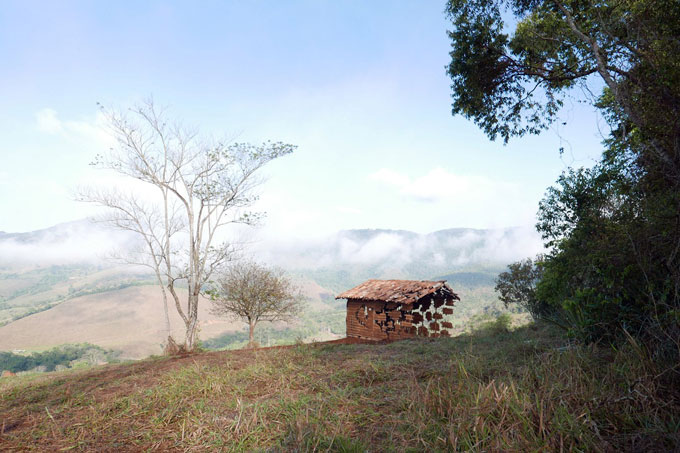
Casa do vento (2016)
How did it progress into adulthood?
My parents supported my work in every way that they could: they loved my drawings and paintings and encouraged my artistic ambitions. Later, however – as many parents would – they expressed doubt that “artist” could be a reasonable job for me. That is one of the reasons why I made some detours in my life before becoming a “professional” artist (I studied literature and philosophy and worked as a teacher). But I won’t complain: sometimes a meandering line is far more interesting than a straight one!
Besides my teacher jobs, I always did artwork (painting, drawing). I learned printing techniques, joined an artists‘ group, and started to exhibit paintings, drawings, and prints. It was quite successful, and one day I received a grant, which encouraged me to quit my job and become a free lancer. Then I worked for a while as an assistant for an older sculptor, who taught me a lot, about art in general and sculpture in particular. This, and another job as an assistant for stage design at a small theatre, introduced me to more 3-dimensional work and the question of how to relate to a given space. I became increasingly intrigued by site-specific installations through some Landart exhibitions that I saw. I joined a Landart network which helped me to get in contact with artists and organisations working in this field, so I found opportunities like exhibitions and symposiums that I could apply for.
It looks like physically exhausting work. Tell us about this aspect and how long it takes you to complete each of your projects?
Yes, it is exhausting sometimes. But other people do sports, or go to a fitness studio, all those things that I don’t need to do . . . In fact I like to move, to feel my physical limits, to get my hands dirty – it keeps me mobile – and may go back to the “outdoor kid” I was. And if something is really too heavy, I have learned to ask for help …
Meanwhile, I often work with local craftspeople, and I highly appreciate this kind of collaboration: I constantly learn a lot about skills, traditions, and techniques in different countries and cultures. Everything I’ve learned about techniques and materials, I’ve learned this way: by watching and doing.
It’s difficult to say how long it takes from the first draft to completion, the projects are so different! I would say, however, the average period I stay on site to build a work is around three weeks. But before that there is a period of preparation that varies, from the first site visit to developing a proposal and specifying materials and technical requirements.
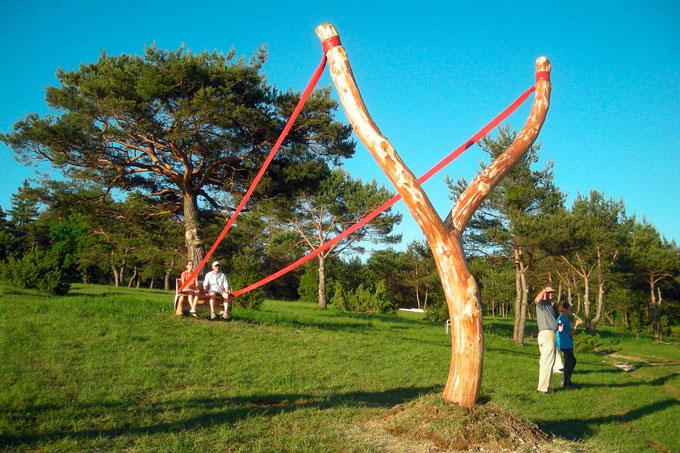
Schleudersitz (2010)
How do you seek out and decide upon the locations?
My favourite approach to an unknown area is walking, with my sketchbook, a camera, and without a certain destination. I just meander, following the attraction of the distinctive features of the landscape: shapes, sounds, smells, tracks, light situations. I collect in my mind what I find along my path – stories, shapes, materials, local characteristics – untill I come to a place where these observations condense into an image.
I know that I’ve found „my site“ the moment that three aspects come together: a clear image of what I can visualise there, the technical possibilities of the location, and a tangible relationship with the observations I have made on my way. This is a very precise feeling and cannot be explained rationally or logically.
Do you document some of your works after a certain amount of time has passed, to see the changes made by nature?
Yes, if I have the opportunity to return to a place. Sometimes it also happens that people send me photos of my work.
Tell us about you as a person and an artist?
I don’t really understand this question, but I think I have already answered it…
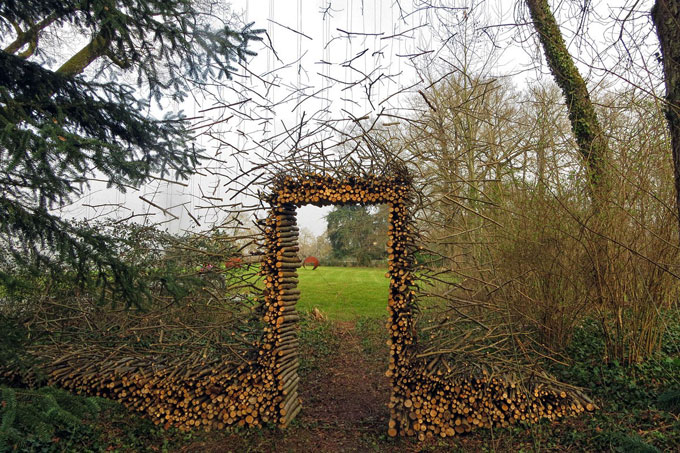
Passage(2015)
Who are the individuals who you would say have motivated you the most?
My teacher Hannes Meinhardt (the “older sculptor” I helped for a while, as mentioned above).
Which are the countries you have exhibited in, and where do you plan to go from here?
This would be a long list…to sum it up: I have worked on all five continents. Next there will be two commissions for an art collection in the south of France and one for a sculpture park in the U.S.
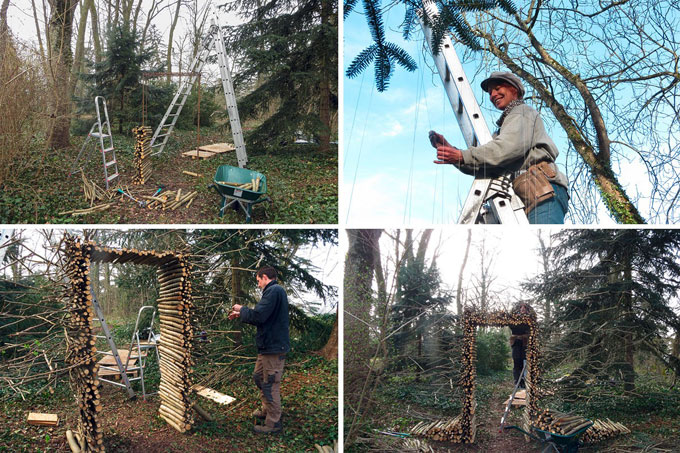
Passage(2015) – preparations
Your work has is unlike any other, but let me ask you if you have ever been inspired by the work of another artist?
Yes, there a few: Erwin Wurm, David Nash, Jan Bas Adler, Joseph Beuys, Wolfgang Laib, Anish Kapoor, Eva Hesse, Rainer Maria Rilke (a poet), Pina Bausch (a contemporary dancer and choreographer) plus the spiders in my studio.
What would be your advice to our readers, who are young people from different parts of the world?
Be aware, stay curious and independent! Don’t get too addicted to technical means and devices! Never forget that life is a mysterious and transient gift – and it’s basically analogue!
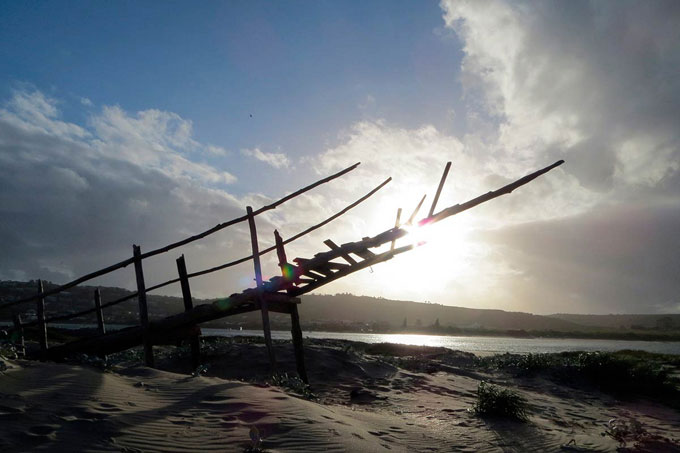
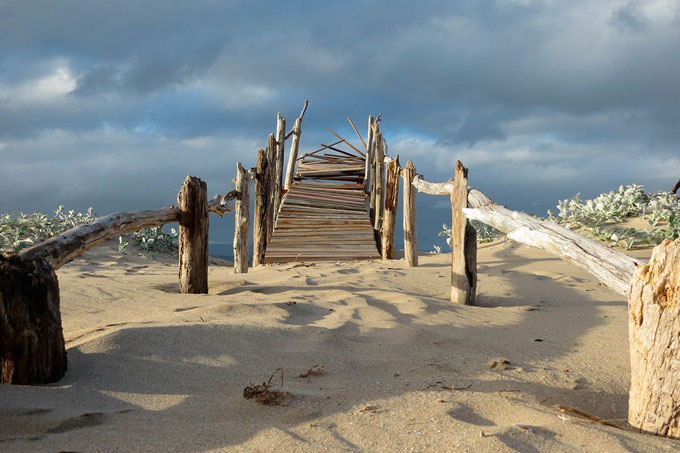
Walkaway (2013)
Photos: From archive of Cornelia Konrads
Support us!
All your donations will be used to pay the magazine’s journalists and to support the ongoing costs of maintaining the site.
Share this post
Interested in co-operating with us?
We are open to co-operation from writers and businesses alike. You can reach us on our email at [email protected]/[email protected] and we will get back to you as quick as we can.
